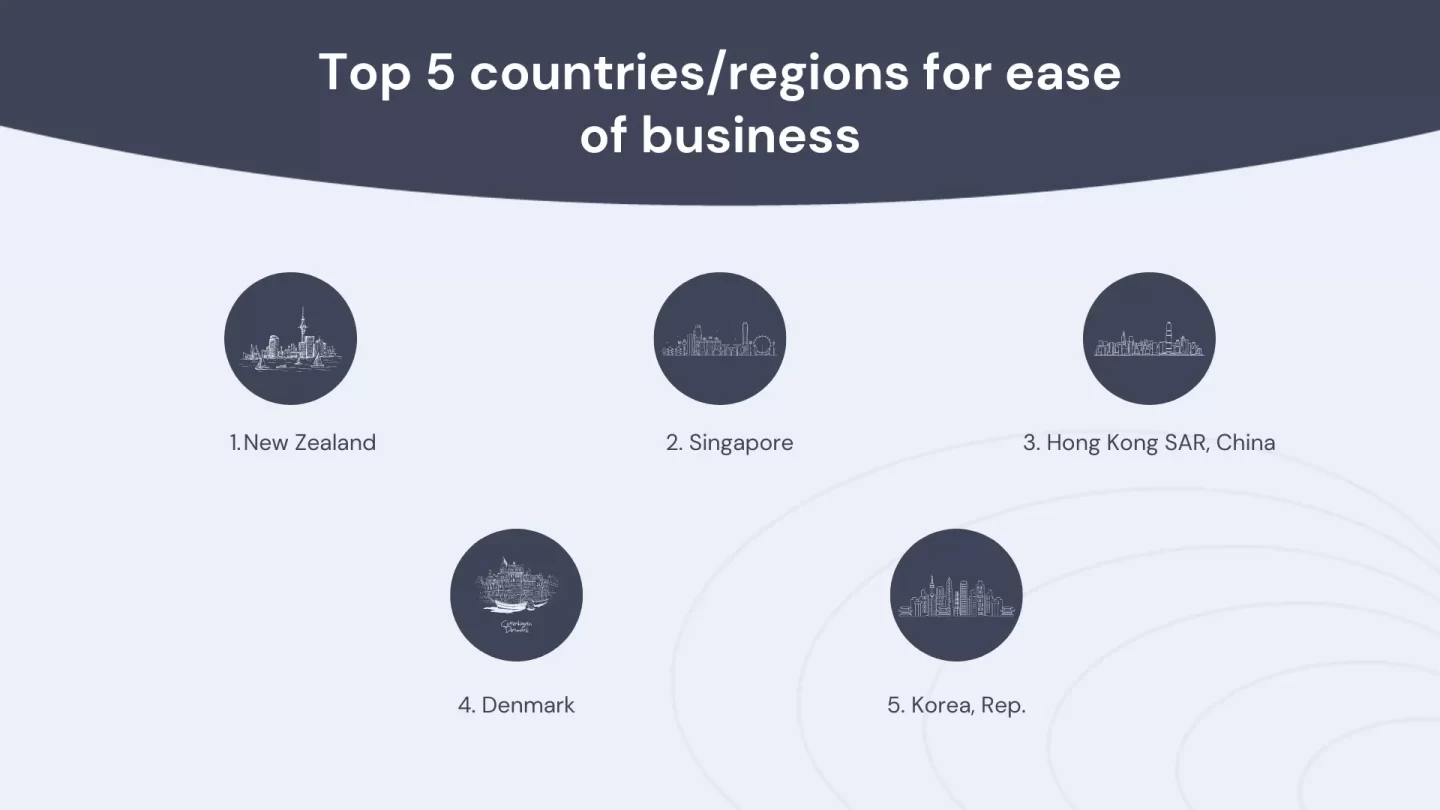Ease of business refers to the simplicity and efficiency with which companies can operate within a particular jurisdiction. This concept includes various factors such as regulatory frameworks, infrastructure, access to finance, and availability of skilled labor. A favorable business environment encourages investment, promotes economic growth, and facilitates entrepreneurship.

Components of Ease of Business
Regulatory Environment
The regulatory environment includes the laws, regulations, and policies that govern business operations. Simplified and transparent regulations reduce the burden on businesses and encourage compliance, making it easier for companies to start and run their operations.
Infrastructure
Infrastructure is a key component of ease of business. This includes transportation networks, utilities, and telecommunications. Efficient infrastructure reduces costs and increases productivity by facilitating the smooth movement of goods, services, and information.
Access to Finance
Access to finance is critical for business growth and sustainability. Availability of credit, investment opportunities, and financial services enables businesses to expand, innovate, and compete effectively.
Skilled Workforce
A skilled workforce is essential for business success. Education and training programs that align with industry needs ensure that companies have access to employees with the right skills and competencies.
Challenges in Ease of Business
Bureaucracy
Bureaucracy can create unnecessary delays and complexities. Streamlining administrative procedures and reducing red tape are essential for improving the business environment.
Corruption
Corruption poses a significant challenge. It increases costs, undermines trust, and creates an uneven playing field. Combating corruption through transparency and accountability measures is crucial for a favorable business environment.
Legal Obstacles
Legal obstacles, such as cumbersome dispute resolution processes and inadequate protection of property rights, can deter investment and business operations. Reforming legal frameworks to ensure fairness and efficiency is vital.
Advantages and Disadvantages of Ease of Business
Benefits for Companies
A high ranking offers numerous benefits for companies, including reduced operational costs, increased efficiency, and better access to markets. It also enhances the overall business climate, making it more attractive for entrepreneurs and investors.
Potential Drawbacks
Overly lenient regulations might lead to environmental degradation or exploitation of labor. Balancing it with social and environmental responsibilities is essential.
Strategies to Improve Ease of Business
Simplifying Regulations
Simplifying regulations and ensuring they are transparent and easy to follow can significantly enhance ease of business. This includes reducing the number of permits required, digitizing processes, and providing clear guidelines for compliance.
Enhancing Infrastructure
Investing in infrastructure improvements, such as roads, ports, and digital networks, can boost ease of business. Reliable infrastructure supports efficient operations and reduces costs for businesses.
Providing Financial Support
Providing financial support through grants, loans, and investment incentives encourages business growth and innovation. Governments and financial institutions play a key role in ensuring businesses have access to the capital they need.
Measuring Ease of Business
Key Performance Indicators (KPIs)
Key Performance Indicators include the time and cost to start a business, the ease of obtaining permits, and the efficiency of contract enforcement. These KPIs help assess the business environment and identify areas for improvement.
Global Rankings
Global rankings, such as the World Bank’s Ease of Doing Business Index, provide comparative data across countries. These rankings help policymakers understand their competitive position and prioritize reforms.

Ease of Doing Business ranking. World Bank Group. Source.
Conclusion
In conclusion, it is a critical factor for economic development and competitiveness. By understanding its components, addressing challenges, and implementing effective strategies, we can create a favorable business environment that attracts investment and fosters sustainable growth.
Frequently asked questions
What is ease of business?
It refers to the simplicity and efficiency with which companies can operate within a particular jurisdiction, encompassing factors like regulatory frameworks, infrastructure, and access to finance.
What challenges affect ease of business?
Challenges include bureaucracy, corruption, and legal obstacles. Addressing these issues is essential for improving the business environment.
How can ease of business be improved?
It can be improved by simplifying regulations, enhancing infrastructure, providing financial support, and leveraging technology to streamline processes.






